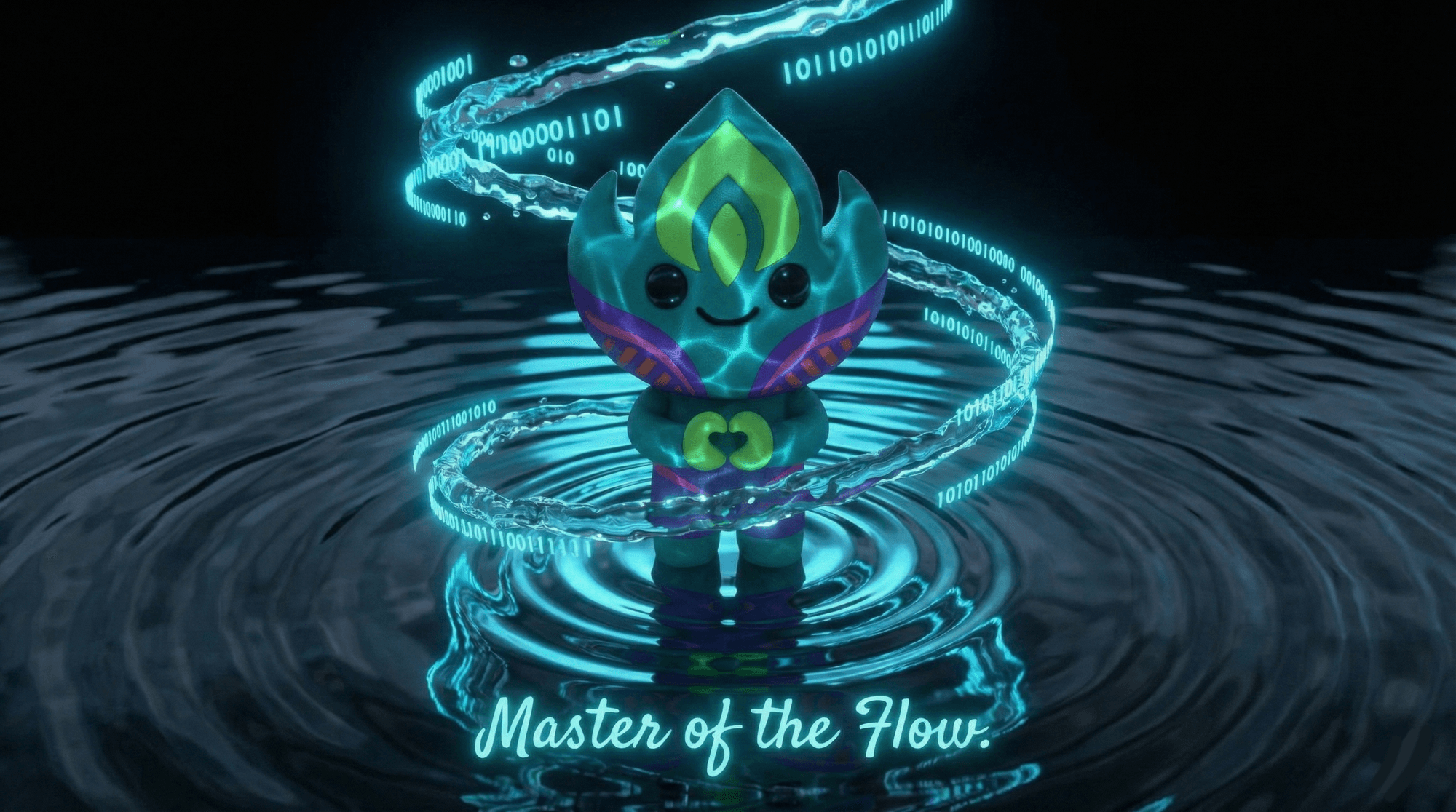
The process of flipping NFTs—purchasing at a lower price and selling for a higher one—has rapidly gained popularity in the NFT market, attracting both newcomers and experienced traders alike. The allure lies in its potential for significant returns, with some NFT traders making substantial profits in a short amount of time.
However, the volatile nature of the market requires more than just good luck. Success in NFT flipping depends on a solid understanding of market dynamics, trends, and timing.
This guide will walk you through the key steps to successfully flip NFTs, from conducting proper market research to making informed decisions on buying and selling.
What Are NFTs and How Do They Work?
Flipping NFTs is the process of buying digital assets at a lower price and reselling them for a higher profit. Success depends on researching market trends, evaluating rarity and demand, and choosing the right timing to maximize gains.
When flipping NFTs, you engage in the secondary market, buying already-minted NFTs to resell them for a profit. Success hinges on understanding value drivers like rarity, demand, and creator reputation. Rare NFTs tend to fetch higher prices, while market demand often spikes with cultural relevance or influencer involvement. A creator’s credibility also adds value to their NFTs. Timing is crucial; you must buy when the price is low and sell when demand peaks, making research and market monitoring essential to maximizing returns.

Why Flip NFTs for Profit?
NFT flipping offers the potential for significant profits, but it also involves risks. Some people have flipped NFTs for millions of dollars.
Here are some examples:
High Profit Margins: NFT flipping offers the potential for significant returns, especially in a volatile and growing market. Early buyers or savvy traders who time their entry and exit well can see their investments multiply quickly.
Growing Market and Cultural Adoption: As NFTs gain mainstream recognition, demand continues to grow. This expansion creates new opportunities for traders to profit from emerging projects, new platforms, and increased visibility.
Community-Driven Value: NFTs thrive on strong, engaged communities, and projects with active followings tend to appreciate faster. Community involvement often adds value to certain NFTs, making them more desirable for resale.
However, the risks are also high. Prices can fluctuate dramatically, and there’s no guarantee that you’ll find a buyer. Additionally, NFT markets are prone to scams and counterfeit projects, so thorough research is essential.
How to Start with NFT Trading
To begin flipping NFTs, follow these foundational steps:
1. Setting Up a Crypto Wallet
Before you can buy or sell NFTs, you need a cryptocurrency wallet where you'll store your digital assets. Some of the most commonly used wallets include:
- MetaMask: Compatible with Ethereum-based NFTs.
- Coinbase Wallet: Known for its ease of use and integration with major exchanges.
When setting up a wallet, make sure to:
- Secure your 12-24 word seed phrase (this is your recovery key).
- Enable two-factor authentication for added security.
Once your wallet is ready, you're set to make purchases.
2. Choosing the Right Marketplace
Selecting the right NFT marketplace is crucial. Platforms allow users to trade NFTs on the Ethereum blockchain. However, marketplaces like TradePort cater to multi-chain NFT trading, integrating networks such as Sui and Stacks.
On platforms like TradePort, users can:
- Browse trending collections and spot potential profit-making opportunities.
- Analyze NFT metrics such as floor prices and trading volume before making a purchase.
- List NFTs for sale using the platform’s simplified listing process, providing an intuitive experience for both buying and selling NFTs.

Researching NFTs to Flip
Flipping NFTs is all about market research and timing. Here are the key steps to follow when evaluating potential NFT investments:
1. Study Market Trends
The NFT market moves quickly, so staying on top of trends is essential. Follow key resources like Twitter, Discord, and Google Trends to identify what's hot. NFT influencers and community engagement can also drive up an NFT's value.
2. Evaluate an NFT’s Rarity and Creator Reputation
Rarity plays a massive role in an NFT’s potential value. Collections with fewer items tend to be more valuable. Additionally, the reputation of the creator can affect demand. Artists like Beeple and collections like CryptoPunks have soared in value due to their cultural significance and creator visibility.
3. Use Analytics Tools
With TradePort our tools can provide useful data to help assess market trends and evaluate NFTs. You can use tools to track an NFT’s sales history and trading volume, which will give you a sense of its liquidity and future potential.
Best Methods for Flipping NFTs
Once you’ve done your research, it’s time to implement flipping strategies.
1. Buying NFTs at Minting (Launch)
Minting refers to the process of purchasing an NFT when it is first created and sold by its creator. Minted NFTs are generally cheaper, offering a higher potential for flipping profit. Here's how to find good minting opportunities:
- Follow NFT drops on social media and community channels.
- Join whitelists for early access to certain projects.
While minting can be a great way to secure NFTs at lower prices, not all projects will gain traction, so be selective.
2. Buy Low, Sell High
This classic investment strategy works well in the NFT market. The goal is to purchase NFTs when they’re undervalued and sell them when demand spikes. To do this:
- Look for undervalued NFTs on TradePort or other marketplaces.
- Monitor market activity: Pay attention to how NFTs within certain collections are trending.
Timing is crucial in this strategy, and understanding the ebb and flow of market demand is key to maximizing profits.
3. Leverage Community Insights
Communities like Discord and Twitter provide a wealth of knowledge about upcoming projects and current market conditions. Celebrities or influencers can significantly impact the price of certain NFTs. For example Steve Aoki, a well-known DJ and music producer, whose endorsement and release of NFTs through platforms like Nifty Gateway caused significant surges in prices for his collections and associated projects. These celebrity endorsements show how much influence public figures can have on the value of specific NFT collections, creating both opportunities and volatility in the market.

Additional Considerations for Successful NFT Trading
Like any investment, NFT flipping comes with risks. Here’s how you can mitigate them:
1. Start Small
As a beginner, it's wise to start with a smaller budget. This reduces your financial risk while you learn the ropes of NFT trading.
2. Diversify Your Portfolio
Don't put all your money into one NFT or one collection. Diversifying across different NFTs will increase your chances of finding a profitable flip.
3. Beware of Scams
NFT scams are prevalent, from fake collections to phishing attacks. Always use verified platforms like TradePort, where the collection’s authenticity is vetted. Additionally, double-check any wallet addresses before sending payments.
Takeaways for Flipping NFTs for Profit
- Stay Active in NFT Communities: Join platforms like Discord and Twitter where NFT creators and collectors engage regularly. Staying active in these communities allows you to spot upcoming trends, get early access to new projects, and stay informed about market movements. Communities often provide insider tips that can help you make better buying and selling decisions.
- Understand Utility and Roadmaps: Some NFTs offer more than just ownership of a digital asset; they provide real-world benefits or access to exclusive communities, events, or collaborations. NFTs with strong utilities or well-defined roadmaps are more likely to appreciate in value over time, so make sure to evaluate these features before making a purchase.
- Consider Long-Term Holding vs. Quick Flipping: While quick flipping can yield profits in a short time, sometimes it pays to hold onto an NFT longer, especially if the project has a strong community, active development, or growing utility. Evaluate each NFT to determine whether it has long-term potential or is better suited for a quick sale.
- Use Analytics to Time Your Trades: Utilize NFT market analytics tools to track floor prices, trading volume, and market trends. Timing is crucial when it comes to flipping NFTs, and the ability to read market signals effectively can mean the difference between profit and loss.
Visit TradePort.xyz and take advantage of its multi-chain support and other features to easily mint, trade, and grow your NFT collection. TradePort.xyz Also provides the tools, insights guides, and access to the TradePort API to help you succeed in your projects—all at no cost.
Stay up to date with the latest news and expert tips by following us on X/Twitter at TradePort.




